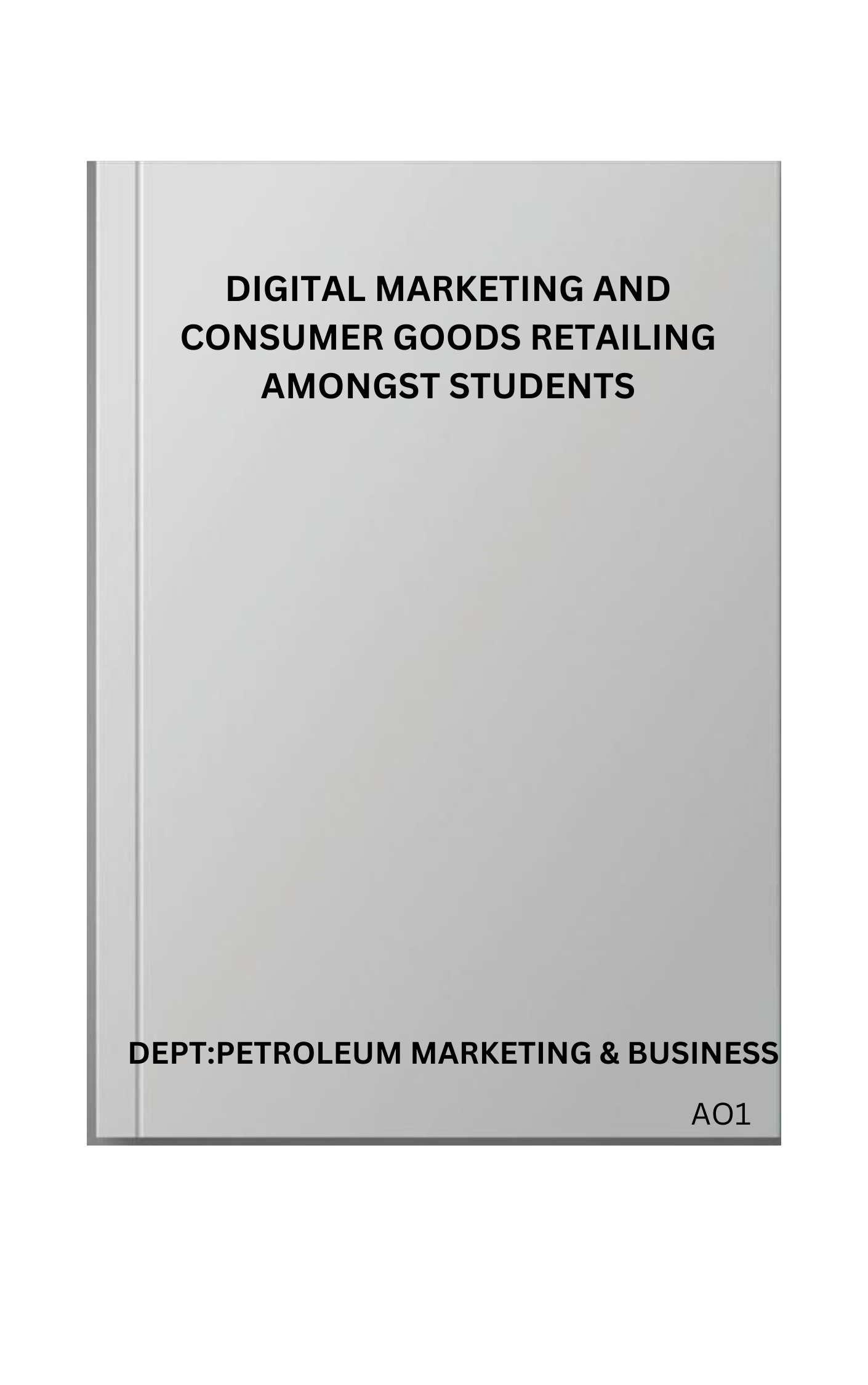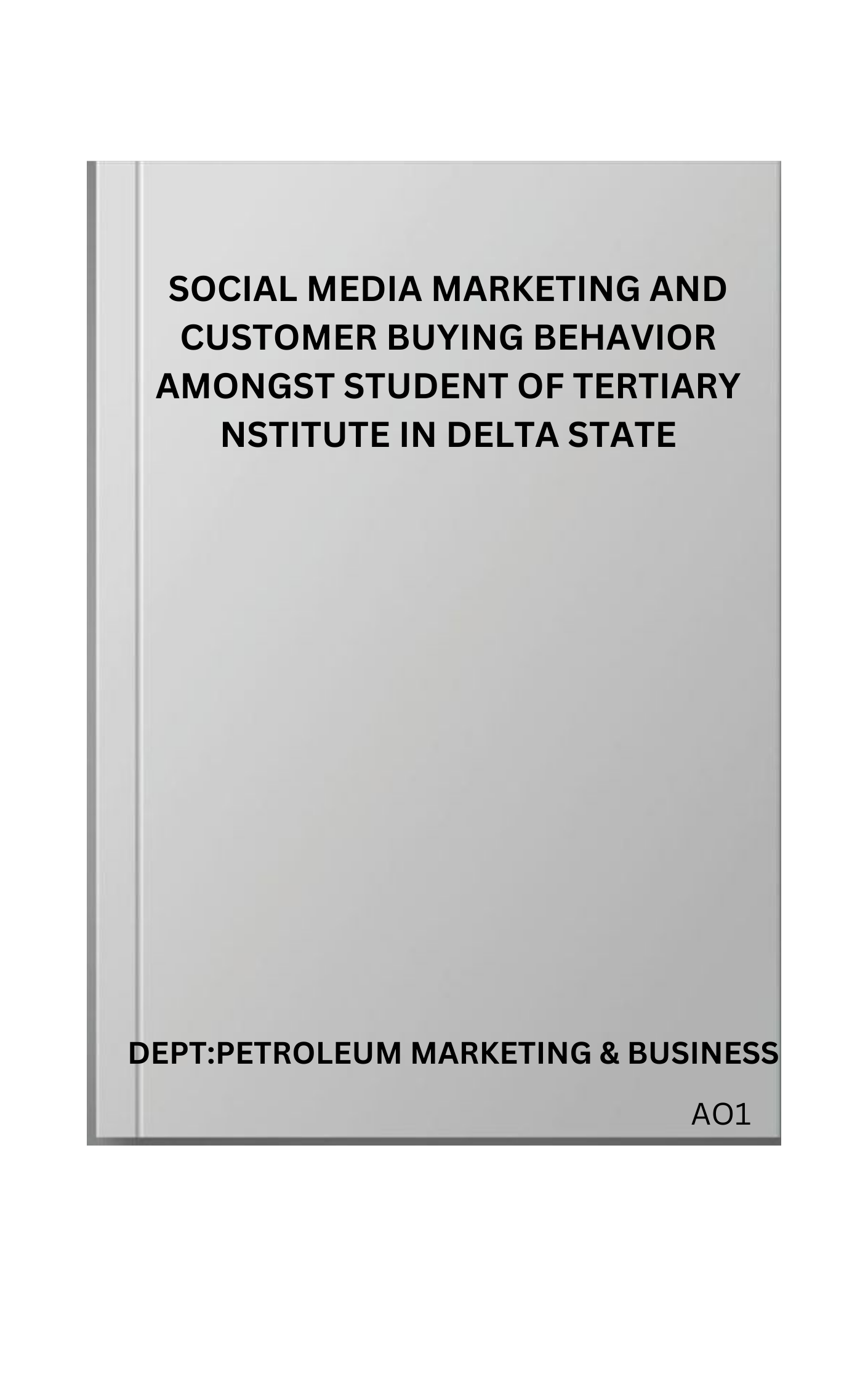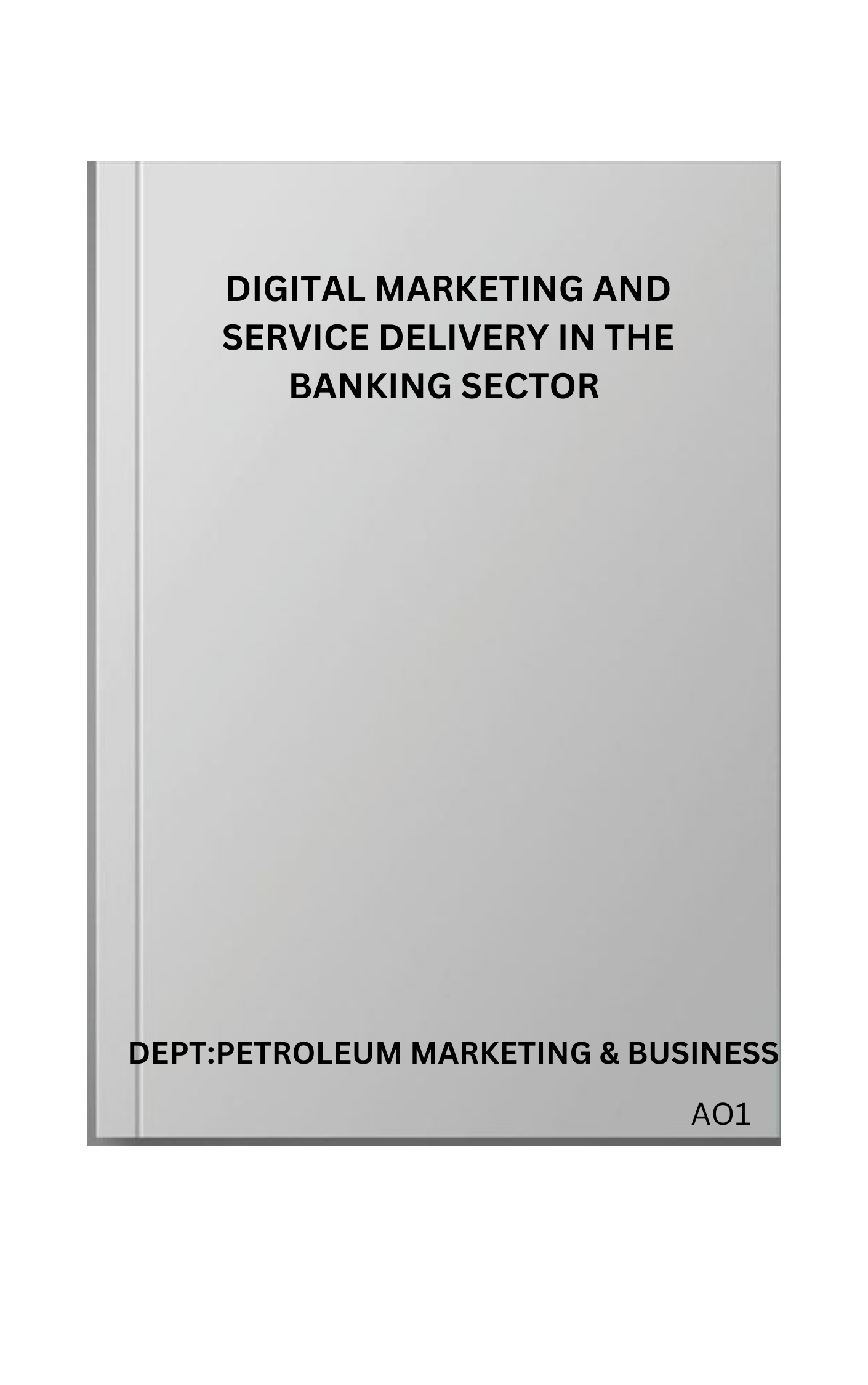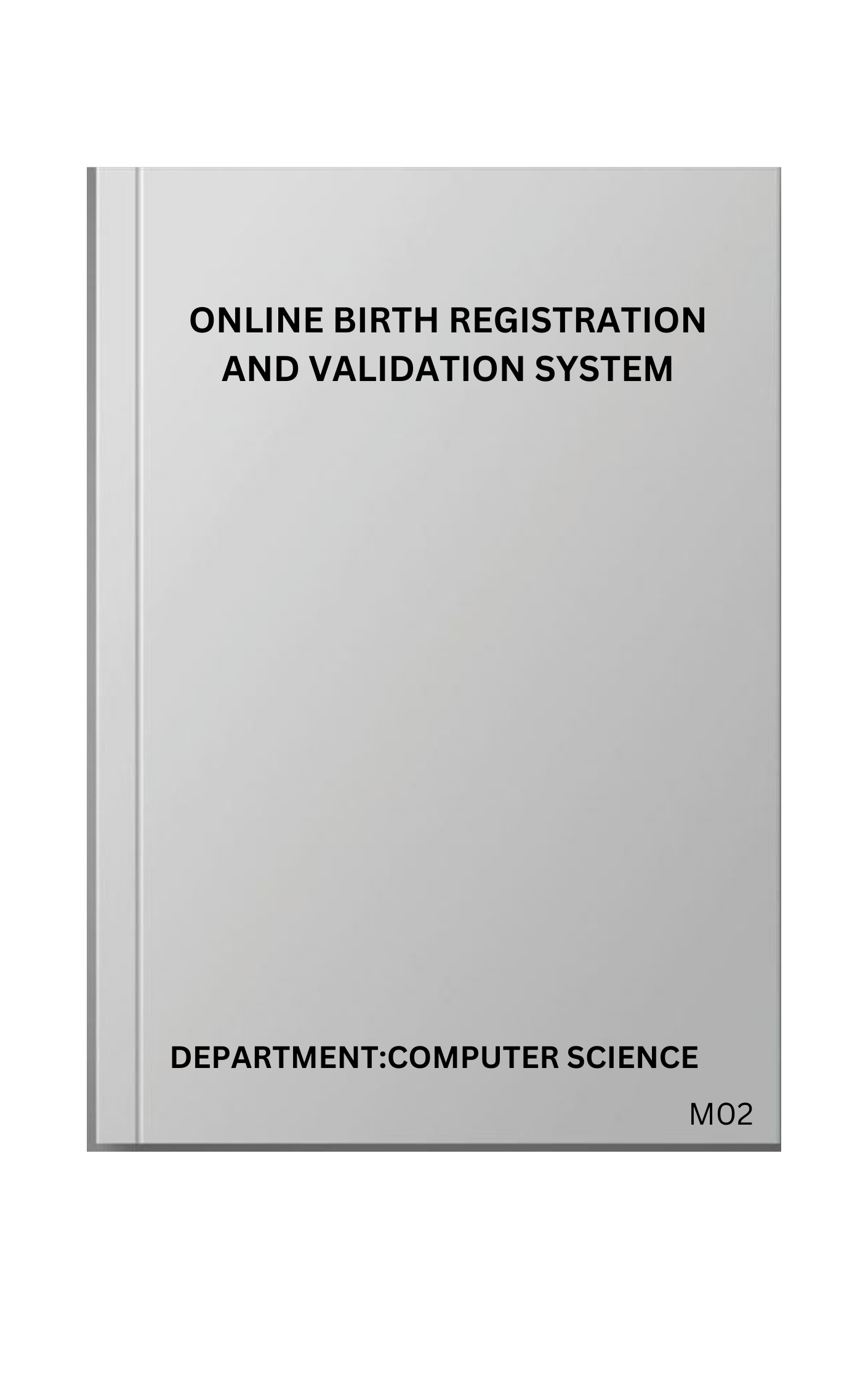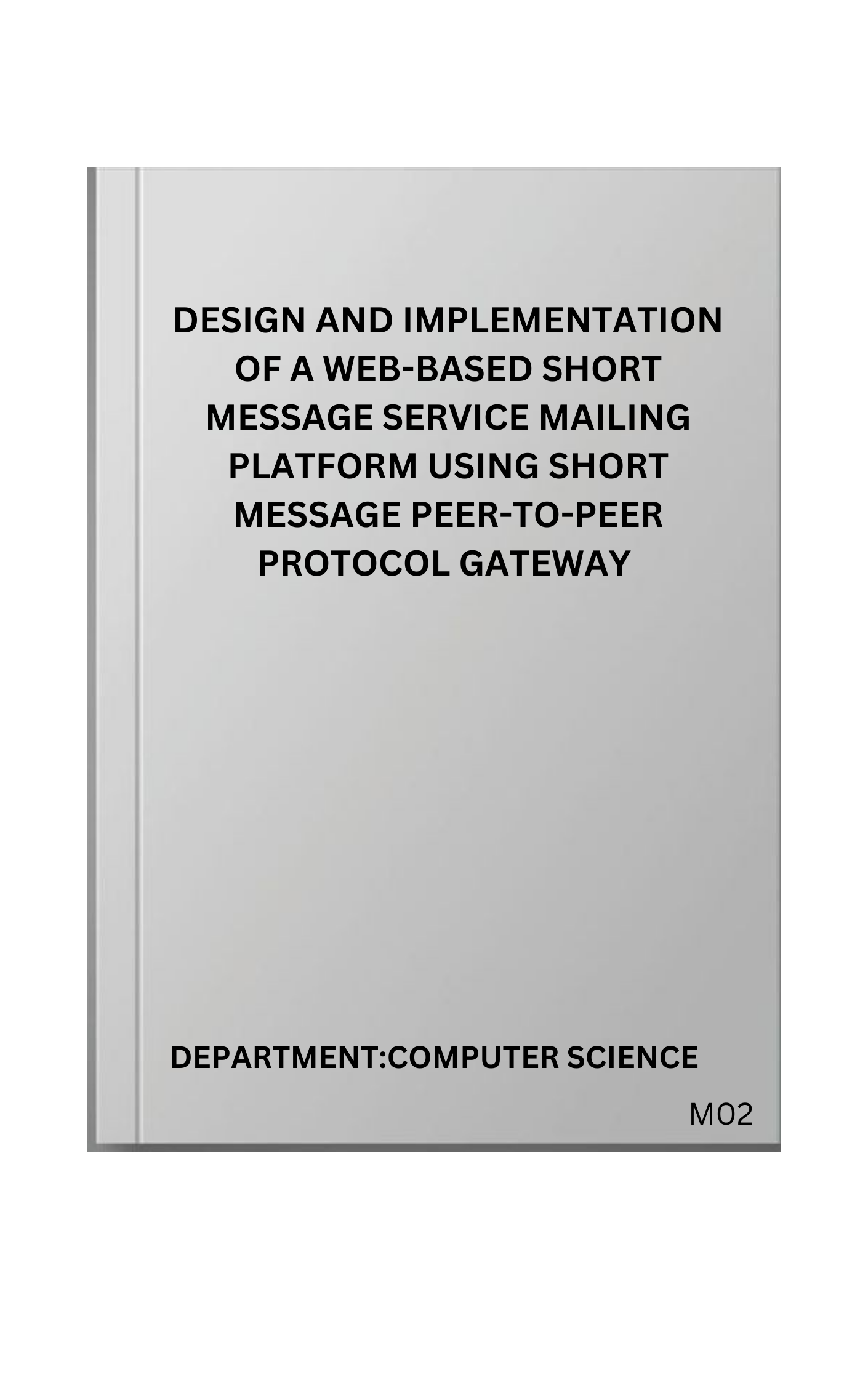CHAPTER ONE
INTRODUCTION
1.1 Background to the Study
Digital marketing has significantly transformed the landscape of consumer goods retailing, particularly among the youth demographic, including students of tertiary institutions. This evolution is largely driven by advancements in technology and the ubiquitous presence of the internet, which have reshaped how brands connect with consumers. Digital marketing encompasses a broad range of strategies, including social media marketing, search engine optimization (SEO), email marketing, content marketing, and influencer collaborations, all designed to engage consumers in a highly interactive and personalized manner (Sahil, 2024).
As of 2023, digital advertising expenditure worldwide is projected to reach approximately $650 billion, reflecting a substantial increase in the reliance on digital marketing as a primary tool for brand engagement. This surge indicates a growing recognition among brands of the importance of digital channels in reaching and influencing consumers. For students, digital marketing plays a crucial role, as they are often characterized by their tech-savviness and high engagement with digital platforms. Research shows that social media significantly impacts their purchasing behavior, with platforms like Instagram, Facebook, and TikTok serving as primary sources for brand discovery and consumer interaction (Statista, 2024).
Students' purchasing decisions are heavily influenced by the content they encounter on these platforms. Digital marketing strategies that emphasize authenticity and relatability resonate well with this demographic, often leading to increased brand loyalty and repeat purchases. The interactive nature of social media allows students to engage with brands through comments, shares, and likes, thereby fostering a sense of community and belonging. Additionally, user-generated content and online reviews significantly impact their decisions, as students tend to trust peer recommendations over traditional advertising methods. (George, Oliver & William, 2024)
Despite the advantages that digital marketing presents, it is not without its challenges. The overwhelming volume of content available online can lead to advertising fatigue, making it difficult for brands to capture and maintain the attention of student consumers. Moreover, privacy concerns and the implications of data protection regulations are becoming increasingly relevant, affecting how brands collect and utilize consumer data for targeted marketing campaigns. Brands must navigate these challenges carefully while also adapting to the ever-changing preferences of student consumers (Ghosh & Kumar, 2022).
Social media marketing plays a pivotal role in connecting petroleum retailers with their customers. Platforms such as
1.2 Statement of the Problem
The rapid growth of digital marketing has made it imperative for consumer goods retailers to understand the dynamics of customer engagement, particularly among students in tertiary institutions.
However, there is a notable gap in research concerning the effectiveness of social media marketing in increasing customer engagement, particularly among students. Retailers are uncertain about the impact of their social media efforts on fostering loyalty and meaningful interactions, complicating the justification of their marketing investments. Additionally, while many retailers utilize search engine optimization (SEO) to improve online visibility, the effectiveness of these strategies in boosting search rankings and translating into increased traffic and sales is largely unexplored, which may lead to resource misallocation. Furthermore, the influence of mobile marketing and pay-per-click (PPC) advertising on purchase decisions and sales remains inadequately understood. This ambiguity poses significant challenges for retailers looking to optimize their digital marketing strategies and enhance profitability in a competitive market (Kikelomo, Mustafa, & Hameedat, 2024).
In responses to this problem, this research proposes to investigate digital marketing in consumer goods retailing amonst student of tertiary institutions.
1.3 Research Questions
The research seeks to answer the following
1.Does the use of social media marketing of consumer product lead to increase customer engagement?
2.Does implementing SEO strategies significantly improve the online visibility and search engine ranking of consumer retail websites?
3.Does mobile marketing of consumer goods enhance consumer purchase decision?
4.Does pay per click advertising improve sales of consumer goods?
PAY TO GET COMPLETE PROJECT

